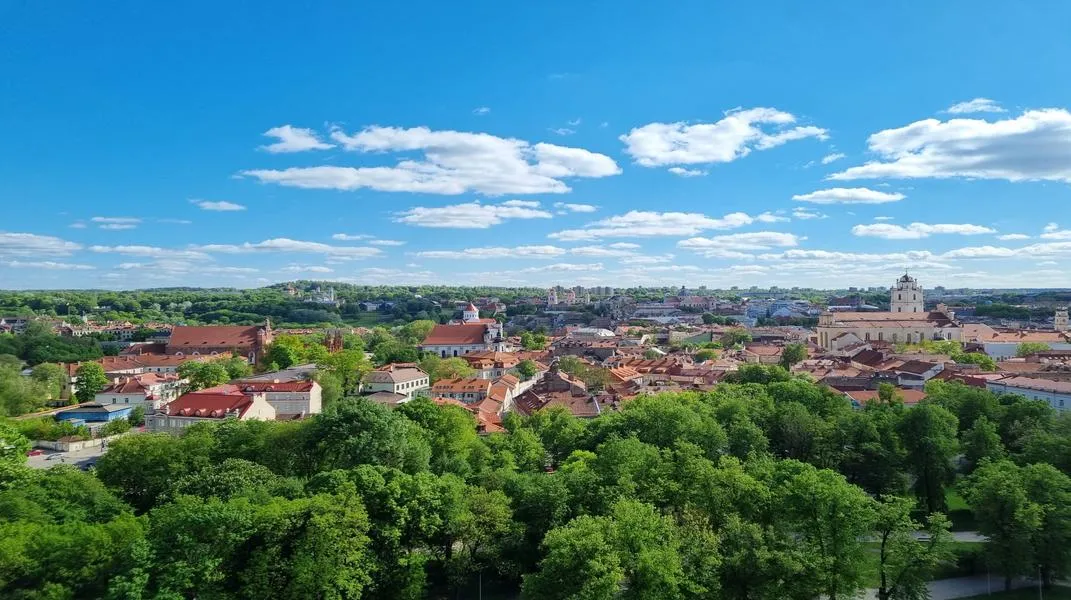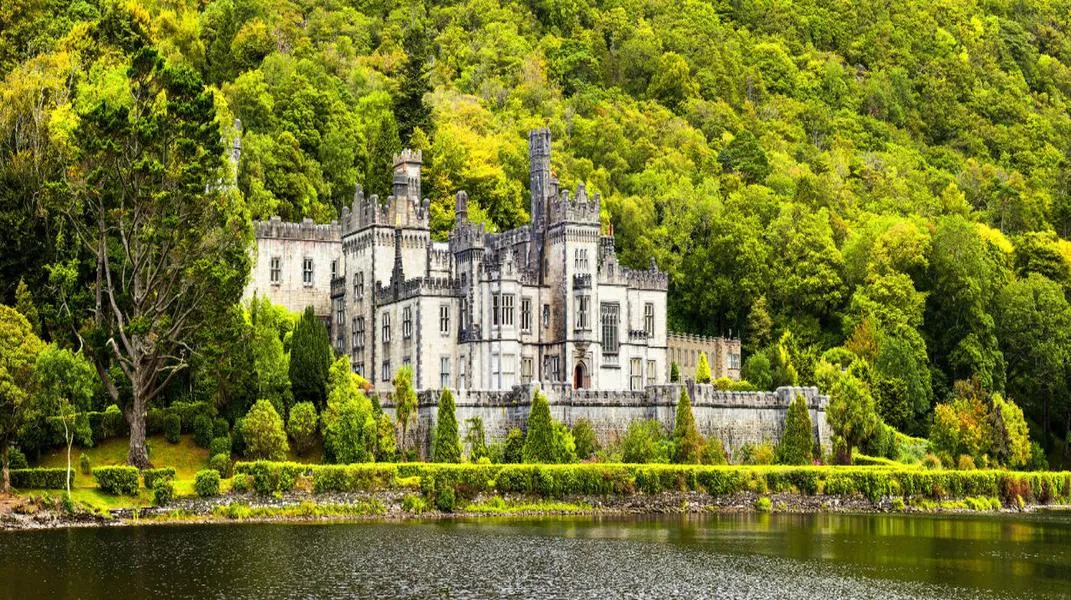Exploring Vilnius: A Hidden Gem in the Heart of Europe
Nestled in the Baltic region of Europe, Vilnius, the capital of Lithuania, is a city that enchants visitors with its rich history, stunning architecture, and vibrant culture. Known for its baroque buildings, cobblestone streets, and an eclectic mix of Gothic, Renaissance, and Neoclassical influences, Vilnius is a treasure trove for tourists seeking a blend of old-world charm and modern-day vibrancy. This article will delve into the myriad attractions that Vilnius has to offer and provide a comprehensive guide on how to prepare for your visit to this captivating city.

The Allure of Vilnius
A UNESCO World Heritage Site
Vilnius is home to one of the largest preserved medieval old towns in Europe, earning its designation as a UNESCO World Heritage Site in 1994. The city's historical center boasts over 1,500 architectural monuments, making it a paradise for history buffs and architecture enthusiasts alike. Walking through the streets of Vilnius feels like stepping back in time, with every corner revealing a new story or artistic marvel.
Iconic Landmarks
-
The Cathedral and Bell Tower
The grand Vilnius Cathedral, with its neoclassical facade and impressive dome, is one of the most recognizable landmarks in the city. Adjacent to the Cathedral, the Bell Tower offers panoramic views of the city and the surrounding areas. Climbing the tower is a must for anyone wanting to capture the beauty of Vilnius from above.
-
Gediminas Castle
Situated on a hill overlooking the city, Gediminas Castle is a symbol of Lithuanian national identity. The castle's origins date back to the 13th century, and it has been a focal point of the city’s history. Visitors can explore the museum housed within the castle and enjoy breathtaking views of the Neris River and the cityscape.
-
St. Anne’s Church
A masterpiece of Gothic architecture, St. Anne’s Church is renowned for its intricate brickwork and stunning spires. Legend has it that Napoleon Bonaparte was so taken by the church’s beauty that he wished to take it back to Paris in his palm.
-
The Republic of Užupis
This quirky neighborhood is a self-proclaimed "republic" and is known for its bohemian spirit. Filled with art galleries, cafes, and street art, Užupis has its own constitution, and its whimsical atmosphere attracts artists and free spirits from around the globe.
-
The Museum of Occupations and Freedom Fights
This poignant museum, located in the former KGB headquarters, provides a deep insight into Lithuania's struggle for independence and the impact of Soviet occupation. The exhibits are thought-provoking and moving, making it a critical stop for understanding the nation’s history.
-
Vilnius University
Founded in 1579, Vilnius University is one of the oldest and most prestigious universities in Eastern Europe. The campus features stunning architecture, including the beautiful St. John’s Church, and is a great place to explore while learning about the city’s educational history.
Cultural Experiences
Vilnius is a city that thrives on cultural diversity, offering a myriad of experiences for visitors. The city hosts numerous festivals throughout the year, including the Vilnius International Film Festival and the Vilnius Jazz Festival. The local cuisine is also a highlight, with traditional dishes such as cepelinai (potato dumplings) and šaltibarščiai (cold beet soup) offering a taste of Lithuania's culinary heritage.
Preparing for Your Visit
To make the most of your time in Vilnius, it’s essential to prepare ahead of your visit. Below are key materials and tips to consider:
Travel Documents
-
Passport and Visa
Ensure your passport is valid for at least six months beyond your planned departure date. Depending on your nationality, you may require a visa to enter Lithuania, so check the specific requirements well in advance.
-
Travel Insurance
It’s advisable to purchase travel insurance that covers health, trips cancellations, and lost luggage. This can provide peace of mind during your travels.
Packing Essentials
-
Clothing
The weather in Vilnius can vary significantly depending on the season. Summers (June to August) are generally warm, with temperatures averaging between 20°C to 25°C (68°F to 77°F). Winters (December to February) can be cold, with temperatures often dropping below freezing. Pack layers, including a warm coat, sweaters, and comfortable walking shoes, as you'll be doing plenty of exploring on foot.
-
Adapters and Chargers
Lithuania uses Type C and Type F electrical outlets, with a standard voltage of 230V. Bring the necessary adapters for your electronics.
-
Comfortable Footwear
The cobblestone streets of Vilnius can be tricky to navigate, so comfortable walking shoes are a must. Consider packing a pair of waterproof shoes if you plan to visit during the rainy season.
-
Backpack or Daypack
A small backpack is ideal for carrying your essentials while you explore the city. Include a reusable water bottle, snacks, a camera, and a guidebook or map.
Planning Your Itinerary
-
Accommodation
Vilnius offers a wide range of accommodation options, from luxurious hotels to budget-friendly hostels. Consider staying in the Old Town for easy access to major attractions. Booking in advance can often yield better rates.
-
Transportation
Vilnius is compact and walkable, but public transportation options like buses and trams are available for longer journeys. The city also offers bike rentals, which can be a fun way to explore.
-
Guided Tours
While exploring on your own is delightful, consider joining a guided tour for a deeper understanding of the city’s history and culture. Many tours focus on specific themes, such as Jewish heritage or culinary experiences.
Local Etiquette and Customs
Understanding local customs can enhance your travel experience. Here are a few tips:
-
Language
Lithuanian is the official language, but many people, especially in the hospitality sector, speak English. Learning a few basic phrases in Lithuanian can be appreciated by locals.
-
Dining Etiquette
When dining out, it’s customary to greet your host or server with a polite "Labas" (Hello) and to say "Ačiū" (Thank you) after receiving service. Tipping is generally expected, with 10% being a standard amount.
-
Respect for History
When visiting historical sites and museums, maintain a respectful demeanor. Avoid loud conversations and take care not to touch artifacts unless permitted.
-
Public Behavior
Lithuanians value personal space and may appear reserved at first. Greet people with a handshake, and when in a group, wait for the host to begin any meal or toast.
Conclusion
Vilnius is a city that captivates with its unique blend of history, culture, and natural beauty. From its stunning architecture and rich heritage to its vibrant arts scene and delicious cuisine, there is something for everyone in this Baltic gem. By preparing adequately for your visit, you can ensure a memorable and enriching experience in Lithuania’s enchanting capital. Whether wandering through the old town, exploring its museums, or savoring local delicacies, Vilnius promises to leave a lasting impression on all who visit. So pack your bags, grab your camera, and get ready to uncover the wonders of Vilnius!




